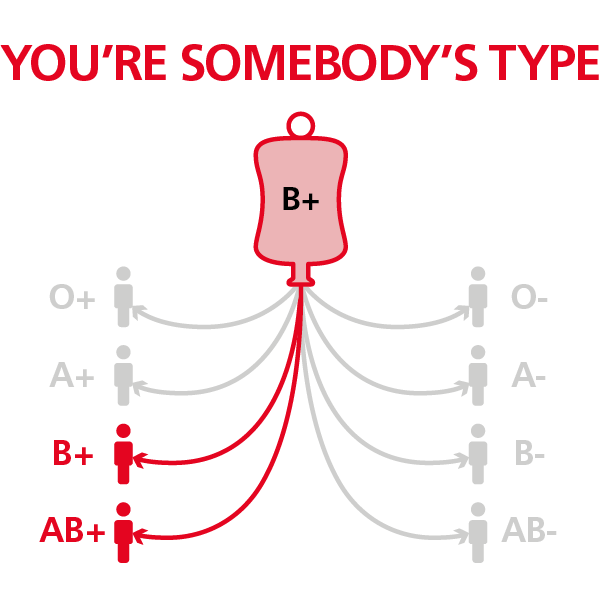
The four blood classifications (A, B, AB, and O) come from these genotypes. Six of these blends (AA, AB, BB, AO, BO, OO) are called genotypes. It's also conceivable that two individuals with type A or type B blood could have a child with type O blood assuming they convey the passive O quality. This intends that if you acquire an O from one parent and A from the other, your blood type would be A. Then again, type O contains no antigens and doesn't influence A and B blood types. You could likewise get B antigens from both parents, giving you a BB or a B, blood classification. You could acquire an A gene from one parent and a B gene from the other, bringing about the AB blood classification. In the same way as other characteristics, you acquire one gene from each of your parents to make a couple. Because it is hard to find new donors and the community heavily relies on existing donors to ensure the availability of blood type B negative for needy patients.īlood types are determined by hereditary qualities (genetics). Therefore, it is necessary to always maintain enough reserve for this blood type. If the rarity of B- blood type is concerned, it comes second after AB negative blood type. In case if any other blood type is transfused to B-negative blood people, their body will initiate an immune response.ī negative blood type has great significance as it is one of the rarest blood types.

Therefore, having a good collection of these blood types became most significant for the blood banks in the sector. Both the blood groups B and O are fairly rare. Who Can Donate Blood to B Negative People?ī negative blood type individuals owing to the presence of B antigen and absence of Rh antigen in the blood can only receive blood from B- and O - blood group people (universal donors). On average, male B-negative blood type individuals can donate blood up to 4 times a year, while female B-negative blood donors can donate blood up to 3 times a year. It is because of the presence of antigen B and the absence of Rh antigen in B-negative blood donors. If counted in numbers, it will be calculated as 1 in 8 people who can receive red blood cells from B-negative donors. Individuals belonging to blood groups B and AB, including B-, B+, AB-, and AB+, can only receive B-negative blood. In contrast, B+ blood type individuals, with just 9% of the population, land last on the list. O blood group individuals are native Americans and majorly O+ blood group ones with a huge share of 53% of the US population.

So this is a little overview of blood type availability of ethnic group caucasian. The blood type in question, B- is the second least caucasian, sharing only 2% of the US population. While AB- blood type is the least caucasian, with only 1% of the US population. O+ blood type is the most Caucasian, with 37% of the US population. This blood type is present only in 2% of Caucasians, 1% of Hispanics, 1% of African Americans, and 0.4% of Asians. However, not all ethnic groups share the same B-negative blood type proportions. Only 1 in 67 individuals has a B-negative blood type, calculated at around 1.5% of the population.

Therefore, always maintaining enough stock of this blood type is necessary. If the scarcity of b-negative blood types is considered, it is one of the hardest to collect. On the same page, B-negative blood type is one of the rarest blood types and second to AB negative. For your information, negative blood types are comparatively rarer than positive types of blood.


 0 kommentar(er)
0 kommentar(er)
